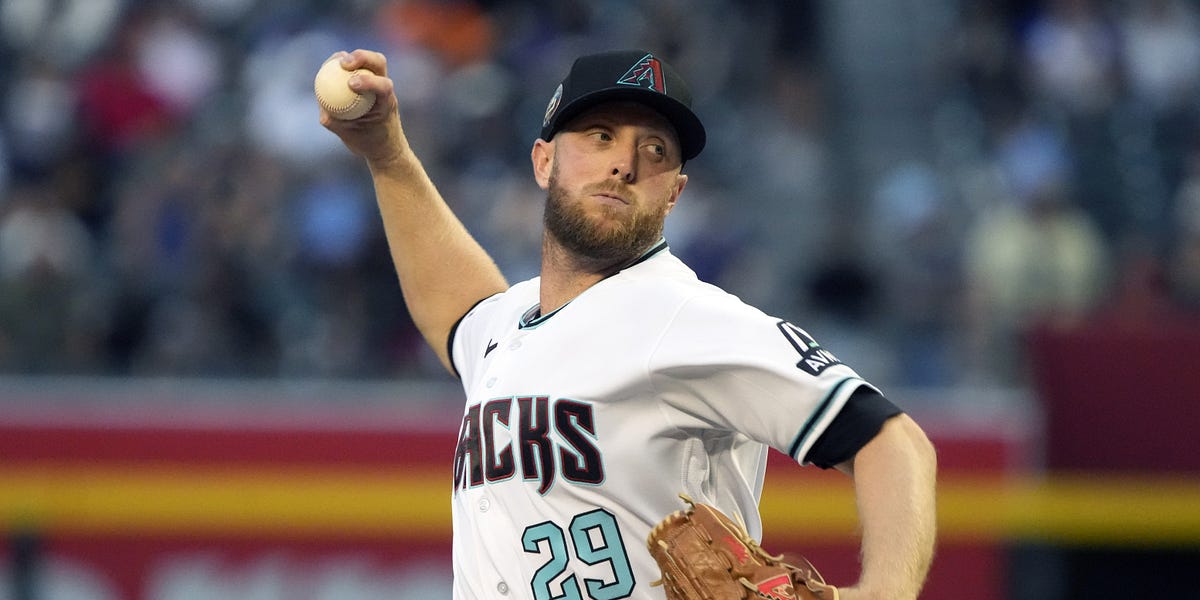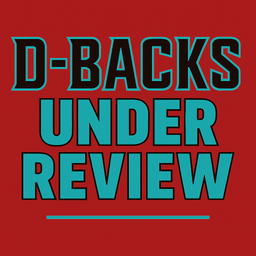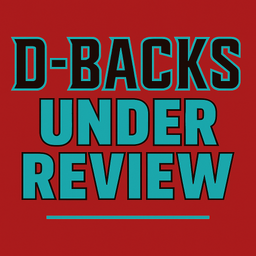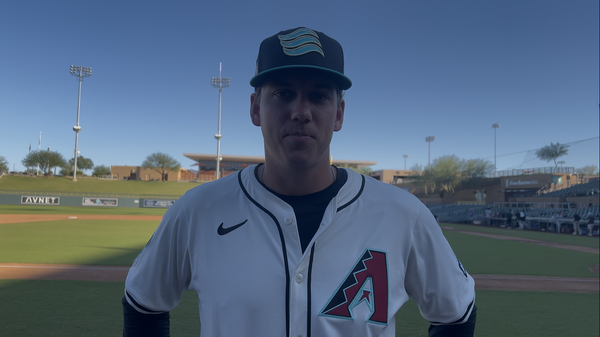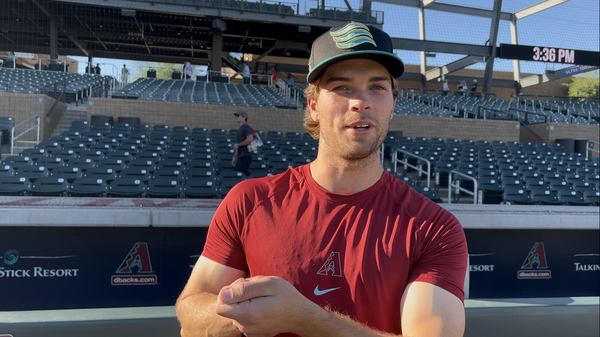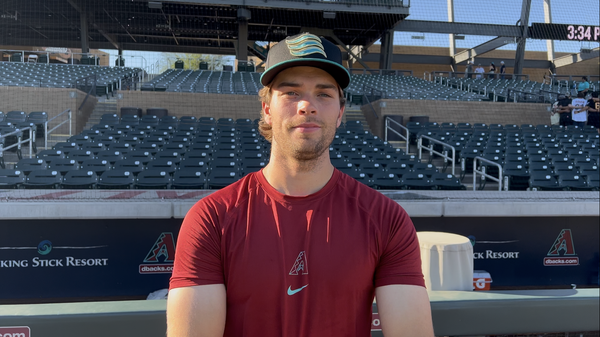Can Ryne Nelson Become Arizona’s Ace After Kelly and Gallen?
With Kelly traded and Gallen's future uncertain, can Ryne Nelson step up and become the Arizona Diamondbacks’ next rotation ace for 2026 and beyond?
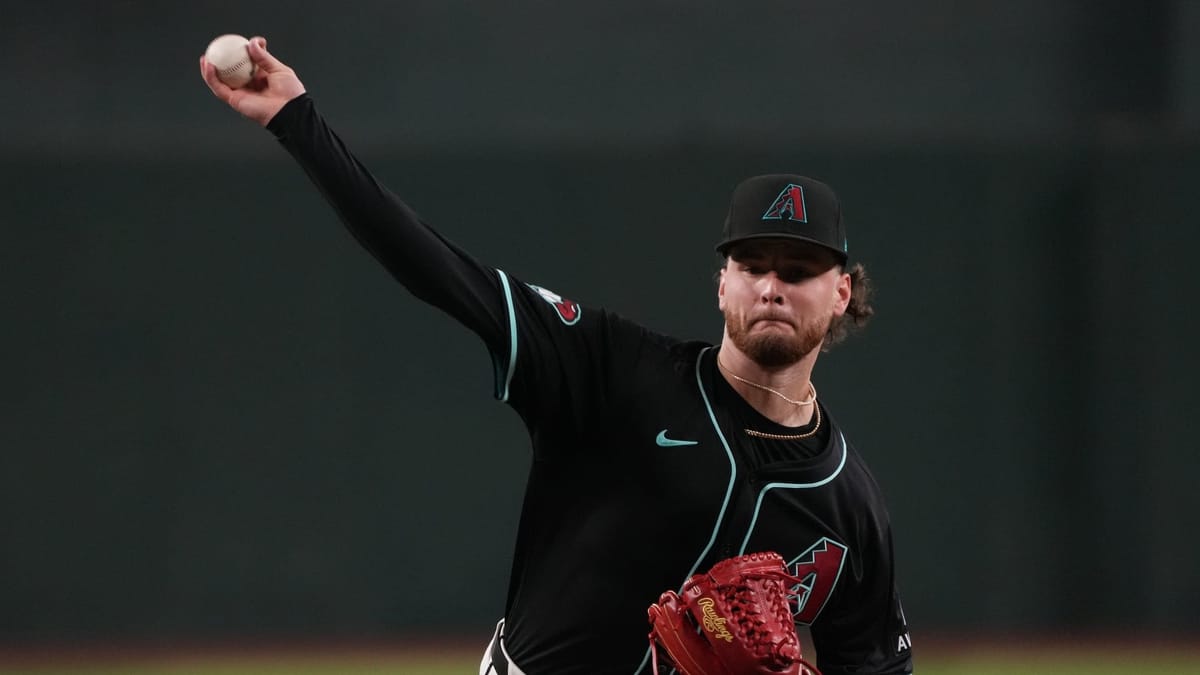
The Diamondbacks enter 2026 with a precarious starting rotation. With key departures and lingering injuries, right-hander Ryne Nelson may need to step up as the new ace of the staff.
It’s not a far-fetched idea based on his 2025 results. On the season as a whole, the 27-year-old right-hander has pitched well. He has a 3.20 ERA in 23 appearances, 13 starts, spanning 95.2 innings. Of his 13 starts, he’s pitched five quality starts, and the team has an 8-5 record. That is the best winning percentage of all their starters this season.
At the same time, there are some concerning metrics surrounding Nelson that could handicap his ceiling if left unaddressed. The two most important metrics for a pitcher are their strikeout and walk rates. Nelson is above the major league average in walk rate, limiting free passes to a 7.3% rate. However, the lack of chases and whiffs has resulted in a below-average 21.1% strikeout rate.
Interestingly enough, when we take the difference (K-BB%), Nelson’s 13.8% mark is slightly above the league average of 13.5%. That’s a solid showing for a mid-rotation arm, but not enough for the type of pitcher the D-backs need him to be if they want to finish this rebuild as quickly as possible. Ideally, that number climbs to at least 16-18%, if not more, for Nelson to become the new ace of the staff.
Ryne Nelson Flashed Ace Potential in Previous Start
Ryne Nelson’s last start against the Detroit Tigers was a mixed bag, but it offered a glimpse at what he’s capable of. He struck out a season-high eight batters, but it also unraveled following an error at shortstop in the fifth inning. Following the error, Nelson served up a single that tied the game and a two-run homer that doomed him to his third loss of the season.
With the Arizona Diamondbacks starting another rebuild, one they’re hoping will be very short, it’s essential to take the positives from that start. Nelson induced 14 swings and misses, one shy of his season high and tied for the third most in his career. Six of those whiffs came on his slider, a pitch he’s been struggling to get a consistent feel for in his entire major league career.
The impressive part of his outing is that his slider induced six whiffs out of nine swings and 17 total pitches. That’s a 66.7% whiff rate and a 35.3% swinging strike rate. Here’s a compilation of the six whiffs in his start against the Tigers.
The common location on these six pitches was down, glove-side (away from RHH, in on LHH), or both. That’s where Nelson needs to locate his slider consistently, if he’s looking to improve both his chase and whiff rate. Entering play on August 5, he has a chase rate of 25.7% and a whiff rate of 20.4%. Among qualified pitchers on Statcast, he ranks in the 21st and 15th percentile in those two metrics.
Why the Slider is the Key Pitch in Ryne Nelson’s Arsenal
The issue that’s persisted in Nelson’s career is the lack of consistent secondaries. He had a major breakthrough last season with the development of a hard cutter. That’s given him a useful pitch against lefties to tunnel with his high velocity (95.5 MPH) and high carry (19.3” induced vertical break) four-seam fastball. However, the cutter is a contact suppression pitch for him, rather than a true chase/whiff offering.
That’s where the slider comes into play. He’s only thrown it roughly 11.5% of the time, right around the same usage as his cutter. Due to its shape (0.1” iVB, 5.3” glove-side break), it has utility against both righties and lefties alike. It has good depth, getting 1.7” more drop compared to other sliders of similar velocity and spin.
Against right-handed hitters, the horizontal movement should sweep away from their bat path when located away. For lefties, the above-average drop should allow it to work underneath their swing when located down. Because of how well it can play against the different swings, it should become Nelson’s go-to secondary offering after establishing his fastball if he’s chasing strikeouts.
The slider isn’t the only pitch he should try to improve, but it’s the most important and the closest to where it needs to be. Of the 174 sliders he’s thrown, he’s induced 69 swings and 20 whiffs. That’s good for a swinging strike rate of 11.5% and a whiff rate of 29.0%. 193 pitchers in MLB have thrown at least 150 sliders this season. Of that group, Nelson ranks 134th in whiff rate and 168th in swinging strike rate. Those are numbers that have to improve in 2026, if the goal is to add more swing-and-miss to his performance.
If Nelson can develop the slider into a usable weapon, that should also make his four-seamer even more dangerous. The pitch already generates +16 run value and 1.6 run value per 100 pitches.
Previewing the 2026 Starting Rotation
There will be a shakeup with the D-backs rotation this winter. Merrill Kelly and Zac Gallen will be free agents at the season’s conclusion. Kelly was dealt to the Texas Rangers for three pitching prospects, and Zac Gallen is a candidate to receive a qualifying offer despite poor results in 2025. Corbin Burnes, the team’s prized free agent signing, will miss most of 2026 recovering from Tommy John surgery. The best-case scenario is that Burnes will be fully recovered in 2027 and can help anchor the top of this rotation with Nelson.
The D-backs need to be prepared for the possibility that both Gallen and Kelly move on next season. That leaves them with a questionable rotation that lacks a proven frontline starter. Eduardo Rodríguez and Brandon Pfaadt are controllable through 2027 and 2030, respectively, but both pitchers have struggled with their location for much of the year. Banking on either starter to lead the staff is a fool’s errand.
In the Kelly deal, the team received a pair of pitching prospects that should factor into the rotation mix in 2026. Left-handers Kohl Drake and Mitch Bratt are close to the big leagues, but probably aren’t in the organization’s top five for rotation spots. Both will be added to the 40-man roster following the season. In addition, the team has Dylan Ray, Spencer Giesting, Yu-Min Lin, and Bryce Jarvis as potential rotation options in Triple-A Reno. Rotation depth pieces such as Tommy Henry and Blake Walston will likely begin next season on the injured list, recovering from their own surgeries.
Should the team be unable to re-sign Kelly or convince Gallen to accept his qualifying offer, this is what their rotation could look like on Opening Day.
- RHP Ryne Nelson
- LHP Eduardo Rodríguez
- RHP Brandon Pfaadt
- RHP Cristian Mena
- LHP Kohl Drake
It’s safe to say that’s not D-backs GM Mike Hazen’s ideal rotation to open 2026 with. I expect him to address this issue in the winter with options beyond Kelly and Gallen. Between now and then, he needs to see what Nelson, Rodríguez, and Pfaadt bring to the table.
Related Coverage
